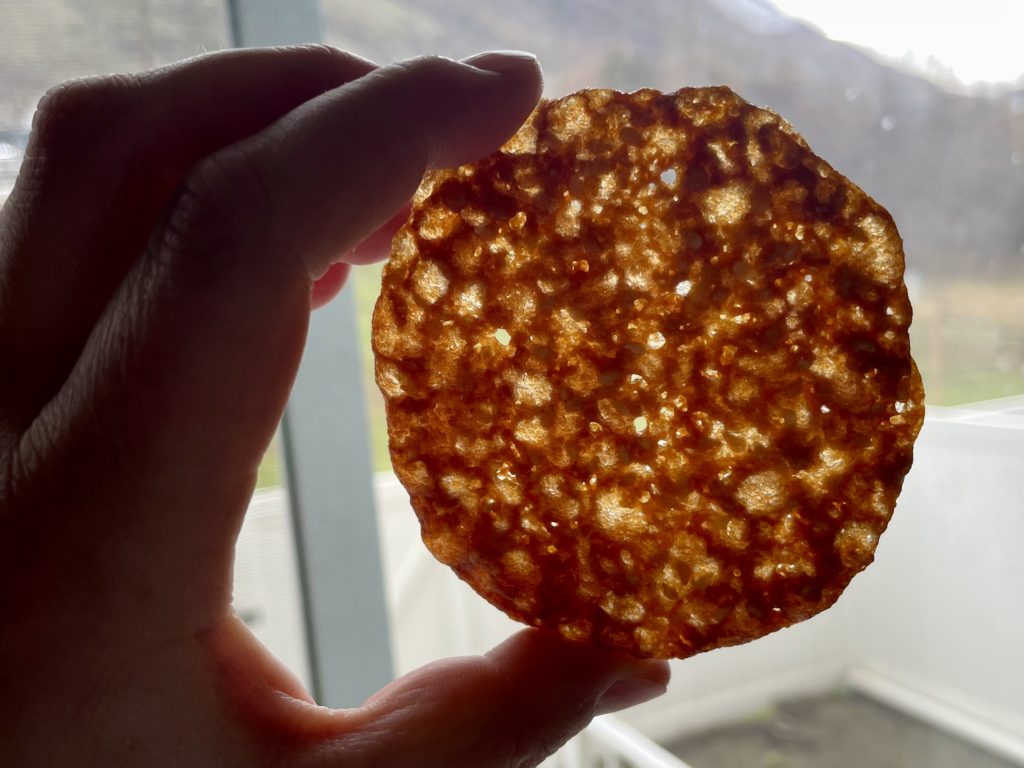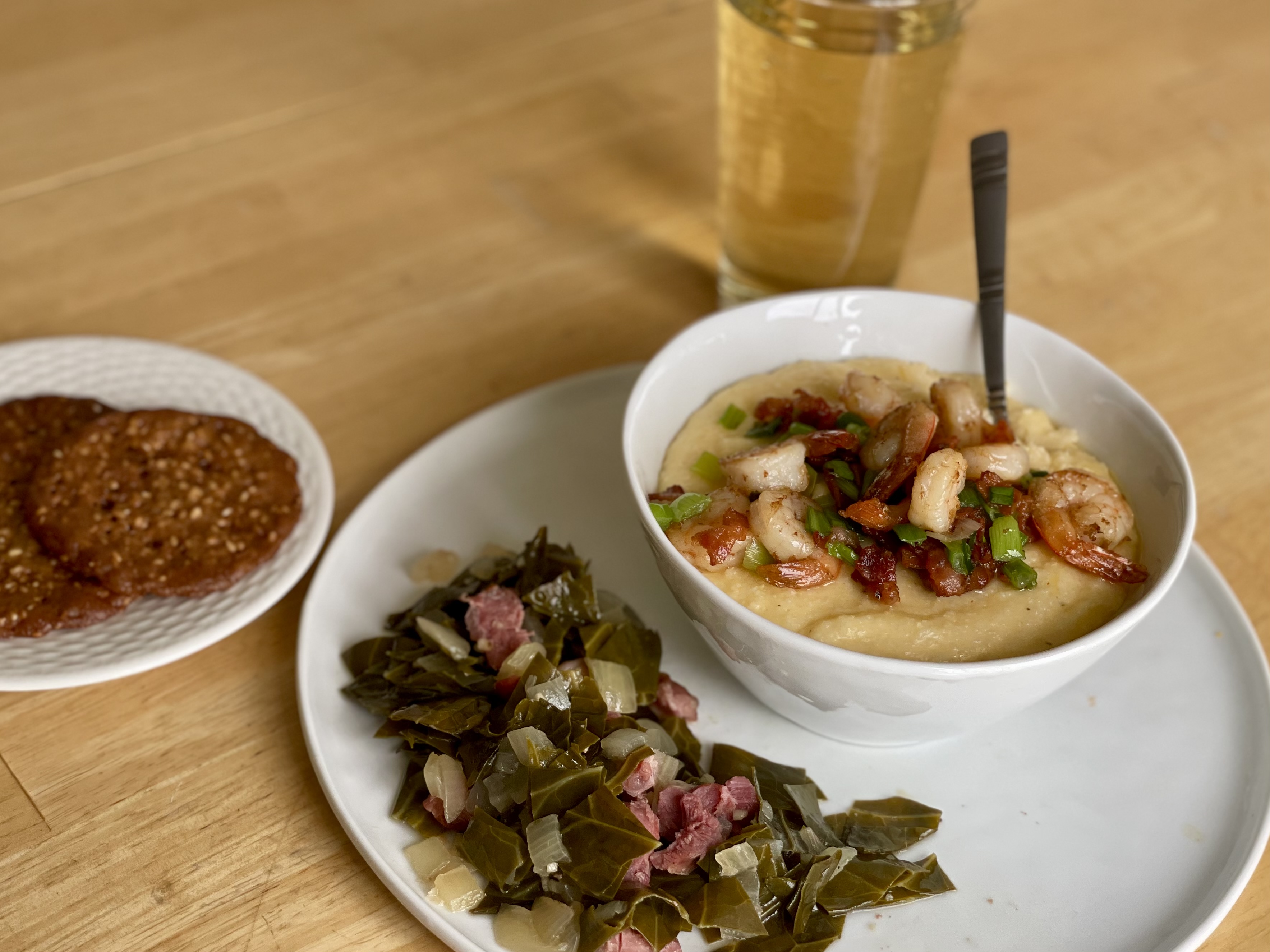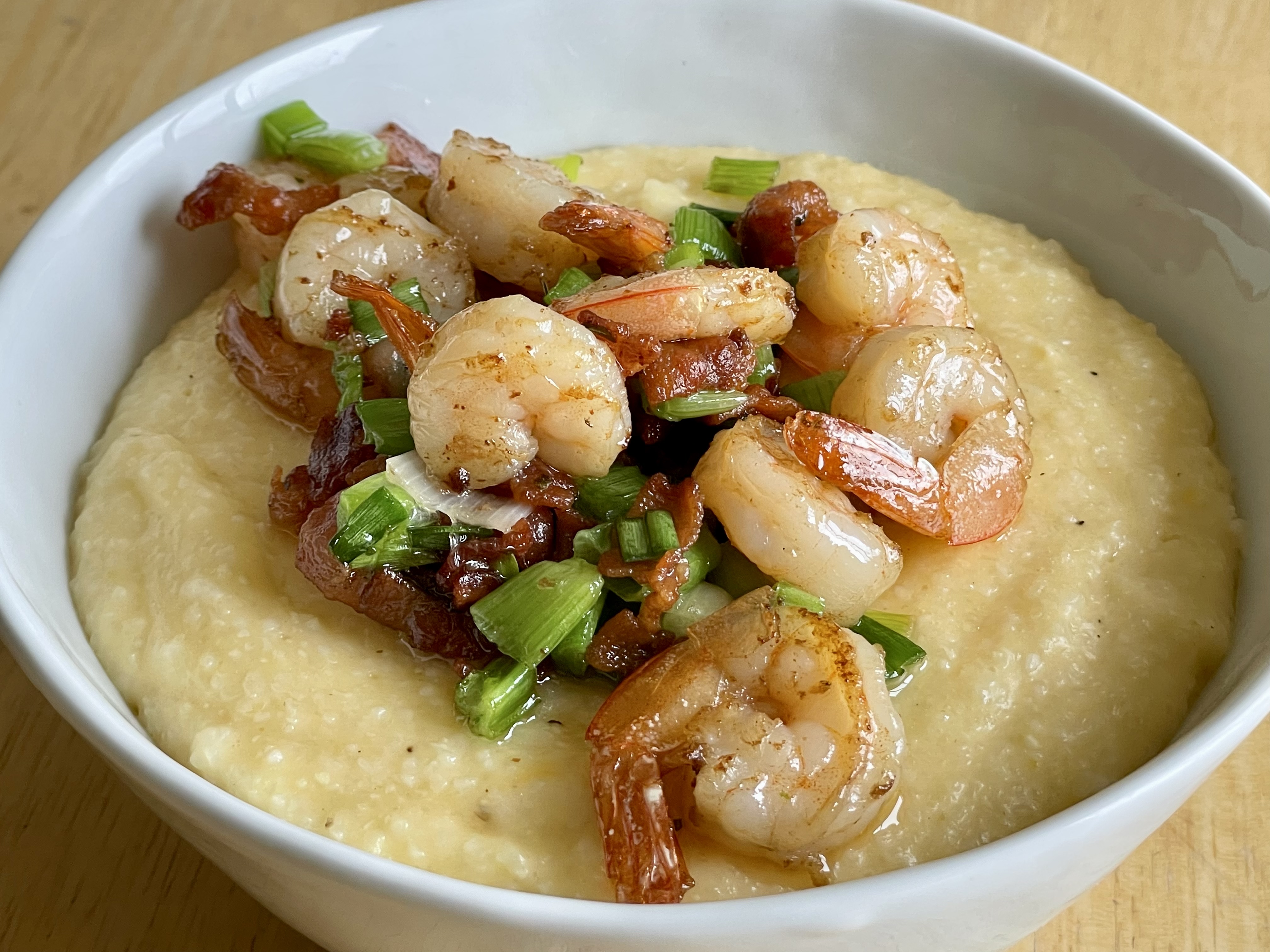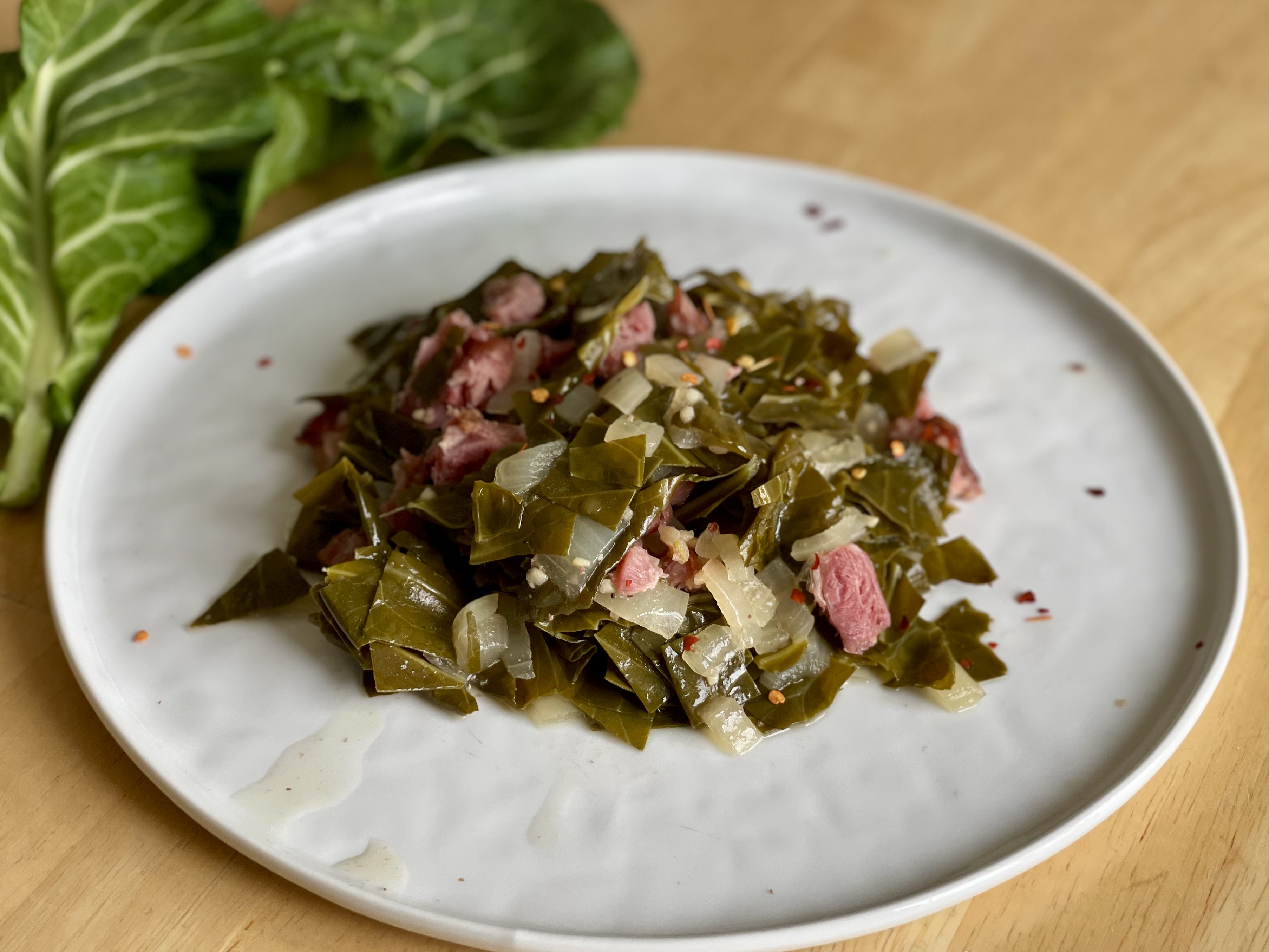Inspired by South Carolina

THE MEAL
(Click on the links above to jump to that part of the post!)
This meal was one that I’ve been looking forward to for a long time! When I think of Southern comfort food, shrimp and grits and collard greens are a couple of the first things I think of. I’ve tried both once before, but making them for myself was a whole new, delicious experience!
SHRIMP & GRITS
Shrimp and grits has an uncertain history. Grits most likely came from Native American preparation of hominy, but similar dishes were also made in Mozambique and other African countries. Corn was part of slave rations, and creek shrimp could be found in waterways and caught by hand to supplement their limited diet. Shrimp and grits was also made by fishermen on the coast.
It was mostly found in South Carolina and Georgia, not in the South as a whole. And it was usually a humble meal made at home. But then a chef in North Carolina made his own version with cheese and bacon, and the New York Times published his recipe. It spread like wildfire and went from a basic South Carolina meal to a classy Southern staple. There are lots of different flavors you can find with shrimp and grits, depending on where you live. To some it’s a breakfast food, to others it’s a dinner meal.
I’ve had shrimp and grits before, but the plate I got had a tomato-based sauce which (as we’ve established) is one of my least-favorite flavors. While I couldn’t deny that it was well-made, I got tired of it in just a couple of bites. So, while not really authentic to its origins, I went with the cheesy bacon version.
And reader, let me tell you, it was SO. GOOD.
I was all worried that I wouldn’t even want to finish the one bowl I made, and that the leftover ingredients would go to waste. But not only did I devour the portion I made for these photos, I then made more later!
The grits were pretty good on their own. They’re basically just a vehicle for whatever flavor you put in them, and I went with sharp cheddar and gouda, so they tasted great.
As for the shrimp–I’ve never been a huge fan of shrimp, and if you’ve been watching this season of The Bachelor, you might understand that I wasn’t really in the mood for shrimp at all. But cooked in bacon grease and sautéed with scallions, garlic, and bacon, this shrimp was AMAZING. I couldn’t get enough of it!
I’m so glad that this challenge got me to try making my own shrimp and grits, because I’ve found a new favorite meal!
COLLARD GREENS
The collard plant is one of the oldest members of the cabbage family, very similar to kale. It may have originated near Greece, and the greens have been used for so long in so many different cultures that no one’s really sure when they were brought to the Americas.
But in antebellum South Carolina, enslaved Africans were given leftover greens from planation gardens, as well as ham hocks (also known as pork knuckles). They used those cast-off ingredients to make delicious and nutritious collard greens for themselves and eventually for white families. It’s now a classic dish throughout the south, and collard greens became the official vegetable of South Carolina in 2011.
I used collard greens in my black-eyed peas recipe for the Oklahoma meal, but I hadn’t eaten them on their own before. I was surprised to find fresh collard greens at my local grocer! I had expected to only be able to find them bagged or frozen.
I prepared the greens the traditional way with ham hocks (another thing I didn’t know I could find at the store), and they tasted pretty great! The flavor is almost like canned green beans, but packed with flavor from onion, garlic, chicken broth, and of course the ham hocks. I don’t know that I would go through the effort of making them again, because they take so long to cook, but I understand now why they’re so well-loved in the south!
SPARKLING WHITE GRAPE JUICE
An obvious choice of beverage for a South Carolina-inspired meal was sweet tea, but unfortunately, I don’t drink tea. So I substituted white grape juice with Sprite. Nothing at all like tea, but close enough for me!
South Carolina was the first place in the United States where black tea was grown, and it’s the only state to ever have produced tea commercially. Most historians agree that the first tea plant arrived in the country in the late 1700s, and iced tea has been around since at least the 1890s. The popularity of iced tea was boosted during the American Prohibition in the 1920s, because Americans were forced to find alternatives to beer, wine, and alcohol. Iced tea recipes began appearing in southern cookbooks during that time. Now, in the South, iced tea isn’t just a summertime drink; it’s served year-round with most meals.
So while I don’t drink tea myself, I wanted to acknowledge what an iconic South Carolina beverage would be. 🙂
BENNE WAFERS
Benne (pronounced “bennie”) is the name of the plant that produces sesame seeds! It was first brought to the U.S. by enslaved Africans in South Carolina, and delicate benne wafers have been made in the state since colonial times. They’re thin, crispy, nutty, and seem fancy but are incredibly simple to make. I didn’t have to buy any ingredients for these (thanks to having sesame seeds on hand for my homemade burger buns), and they only took 20 minutes to put together!

My wafers turned out looking really dark because I used the last of my dark brown sugar to make them, but usually they’re a paler gold. And if you make them yourself, it’s not a typo when the recipe says to drop them by the TEAspoon when getting ready to bake. I thought that seemed too small, so I dropped bigger spoonfuls in my first batch, and they spread out so much that the edges all blended together. The second batch, I was much more conservative, and they turned out perfect.
I really liked these! They taste almost like peanut brittle, and are a nice, light alternative to the more indulgent desserts I’ve made for this challenge so far. I could totally see myself making these again for a tea party with my nieces.

So how do you think I did? Let me know in the comments if you have any suggestions for improvement, and be sure to tune in next time for my take on a meal inspired by North Carolina! If that’s where you’re from, what do you think I should make to represent your state? Bonus points if you have reliable recipes or pro tips before I make the attempt! Thank you for reading!



